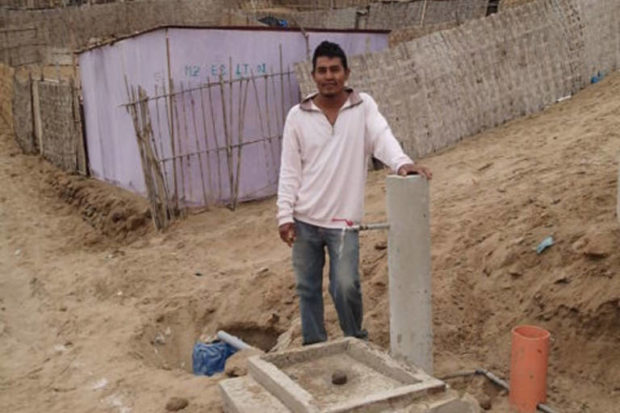

By Ingrid Carmean
As a Peace Corps volunteer, I’ve been working in the Santa Cruz area of the town of Cerro Candela, Peru, helping the residents to obtain ready access to water. We have achieved step one of our project: They no longer have to carry water up the hill everyday. But they are not yet hooked up to the town’s main water line. It was a major success that we got the mayor to agree to the hookup, but the local water committee refused. (This was expected, and the system was designed to receive water from tanker trucks.) However, a new committee was just elected, and there is hope for a reversal of this policy.
Other problems also exist. For one thing, the water needs to be boiled before drinking, but this is the norm in Peru. More important, the shipped-in water is expensive. The villagers hadn’t even asked about price before starting the project, so although they have water to drink and for their trees, the water costs too much for bathing and washing clothes. Until they can get the hookup, they still do those things in the irrigation ditches down the hill.
 Trees are an essential part of the project; in fact, they are the basis of the grant supporting it. The trees justify it as a way to counter climate change. Already, every faucet in Santa Cruz has been given at least two trees, and there are 170 more small trees being grown for distribution throughout the town.
Trees are an essential part of the project; in fact, they are the basis of the grant supporting it. The trees justify it as a way to counter climate change. Already, every faucet in Santa Cruz has been given at least two trees, and there are 170 more small trees being grown for distribution throughout the town.
Before I went to Peru, a number of people expressed doubt about the Peace Corps, and at one point I too was upset about how little money we were given in our grants. Now, as I look at 20 or 30 people working on this water system, I realize this is exactly what the Peace Corps is supposed to do.
With a little money from the United States, expert advice (in this case an engineer in Florida), a lot of work on the part of the community and the encouragement of a volunteer, the people in a community can raise their standard of living considerably. Beyond that, a small project like the one I work with can raise people’s belief in themselves.
Here, they are already building an extension on their new water system, funding and planning it themselves. I am researching the types of trees that might grow on the hill. They are dreaming of putting many trees or agricultural crops on the hill.
*****
Ingrid Carmean is a WILPF member and Peace Corps volunteer working in Canete, Peru. Contact her at icarmean2@gmail.com.
